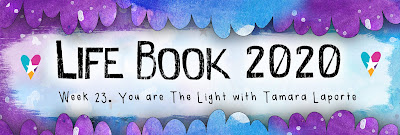From
Dollmaker's Journey Customer Connections archive:
Saving this here, as sometimes things disappear from websites. Please visit
Dollmaker's Journey for all your doll making needs.
DYEING MOHAIR HIDES FOR DOLLS
By Bonnie B. Lewis
Here is the method my good friend Ellyn Voss uses to get wonderful dyed mohair fleece for doll hair.
CAUTION! This method works best with bleached hides because they stay supple when dyed. Unbleached hides become stiff and brittle, difficult to work into a wig. It is bleached if the fleece is white and not off-white or yellow.
Other terminology: A skin tanned WASHABLE dyes beautifully. A skin tanned DRY CLEAN will harden.
1. Cut skins into about 12" square pieces (or as tall as your pitcher by 18" long (see step 3). Larger pieces are more difficult to dye using this method.
2. Dissolve 1/2 package Rit dye (powdered dye works best) in 1 cup very hot water. Stir to dissolve. Cool to lukewarm. Make sure you have adequate ventilation when using the powdered dyes.
3. Add 6 to 8 cups tepid water to dye mixture in two-quart pitcher. (This is very important, because fleece can be shocked if subjected to extreme temperature variations. Hot water will cause the hide to
stiffen.) Pitcher may be glass, enamel or plastic, but NOT metal. Mix dye thoroughly, using wooden or plastic stirrer. You can also use a 9 x13" glass or enamel (NEVER metal) pan, but pieces of fleece must be cut to fit pan. IMPORTANT *NEVER* use any of these utensils or containers for food again.
4. Wet hide in lukewarm water. Loosely roll into tube with fleece side out.
5. Immerse fleece in tepid dye bath in the pitcher until you are satisfied with the color. DO NOT agitate; just make sure fleece is completely covered with dye. You can push fleece down into dye with handle of stirrer. Remember that the fleece will look a lot darker when wet, and will lighten in color when dry. This step can take from ten minutes to several hours to overnight, depending on how dark you want the mohair. You can use the dye several times, but the color will lighten and you will have to leave the fleece in longer for good results.
6. Gently rinse out excess dye under tepid running water. It helps to wear plastic gloves so your hands won't become dyed in the process. Some people are also allergic to the dyes; better safe than sorry.
7. Place wet fleece on an old white towel and roll up, gently pressing to remove excess water. You can do this several times.
8. Hang fleece with nap going down on a clothesline and dry by turning on a powerful fan. Dry the skin side first for about an hour, then turn fleece around and dry the mohair side. Using a fan will speed up drying time and help the mohair to fluff. Be sure and place an old towel under the drying fleece to absorb any excess water that might drip. This method of drying is preferable to using the clothes dryer because it eliminates agitation, which can create felting.
Realistic colors: For a wonderful redhead color use Rit Pumpkin. Use Rit Tangerine with a tiny bit of Golden Yellow for a bright carrot top. Rit Tan makes a good very light brown (almost blonde) color.
Rit Cocoa Brown with Yellow is a light brown. It is impossible to get a good dark brown or black color using Rit dye.
Fantasy colors: For fantasy pink hair use Rose Pink and Tan. Rit Golden Yellow by itself is a good fantasy color for a very bright yellow. For fantasy fairies try Rit Seafoam, Purple, Blue, and Kelly Green. HINT: If the color is too bright, try over dyeing with Rit Tan to dull the color.
CAUTIONS:
Always wear a mask when working with powdered dyes. Liquid dye is not as critical. You can buy masks at any good hardware store, pharmacy or craft store for $3 -$4 a package. Check the paint department.
NEVER use utensils for food after using with dye.
Always dissolve powdered dye in small amount of water before adding lots of water. SLOWLY pour dye into jar so particles don't become airborne. This is the same principle as putting down the toilet seat before flushing. You can put powdered dye and hot water in a quart glass jar, add lid and shake well.
You must have good ventilation when working with powdered dyes. Use a stove vent, open a window, use a fan, or do it outside.
Protect your hands. Wear rubber gloves.
You can find mohair plates from the following sources:
World of Mohair (Sue Kneir)1007 Bower Road, W. Harrison, IN 47060
(812) 637-3874
http://members.aol.com/SDKneir/index.htm
Major supplier
http://www.gfwco.com/Tibet%20Lamb.htm
Check out other things they carry.
South Forty Farms (Georgia Thomas)
http://www.southfortyfarms.com
HERE'S ANOTHER TIP from
Patricia Rose Studio:
Leave the fur on the hide, cut the hide into smaller pieces, if you want, by cutting on the raw hide side only. Draw a line, cut close to the surface when you cut so that you don't cut off too much fur on the other side. Boil some water, put it into a large enough bowl to submerse that section of the hide. Before putting the hide in, thoroughly mix in some liquid RIT dye the color you want. Don't use Cocoa thinking you are going to get brown, it turns purple. Put the hide into the boiling water with the dye in it and stir it around for 5 minutes. Take it out, run clear water over it to rinse out the dye and hang it on skirt hangers to dry. That's it. If the color is not what you want, you can re-dye it after it is dry. Do not use a blow dryer on it. Sometimes it takes two dyings to get the desired color.






















